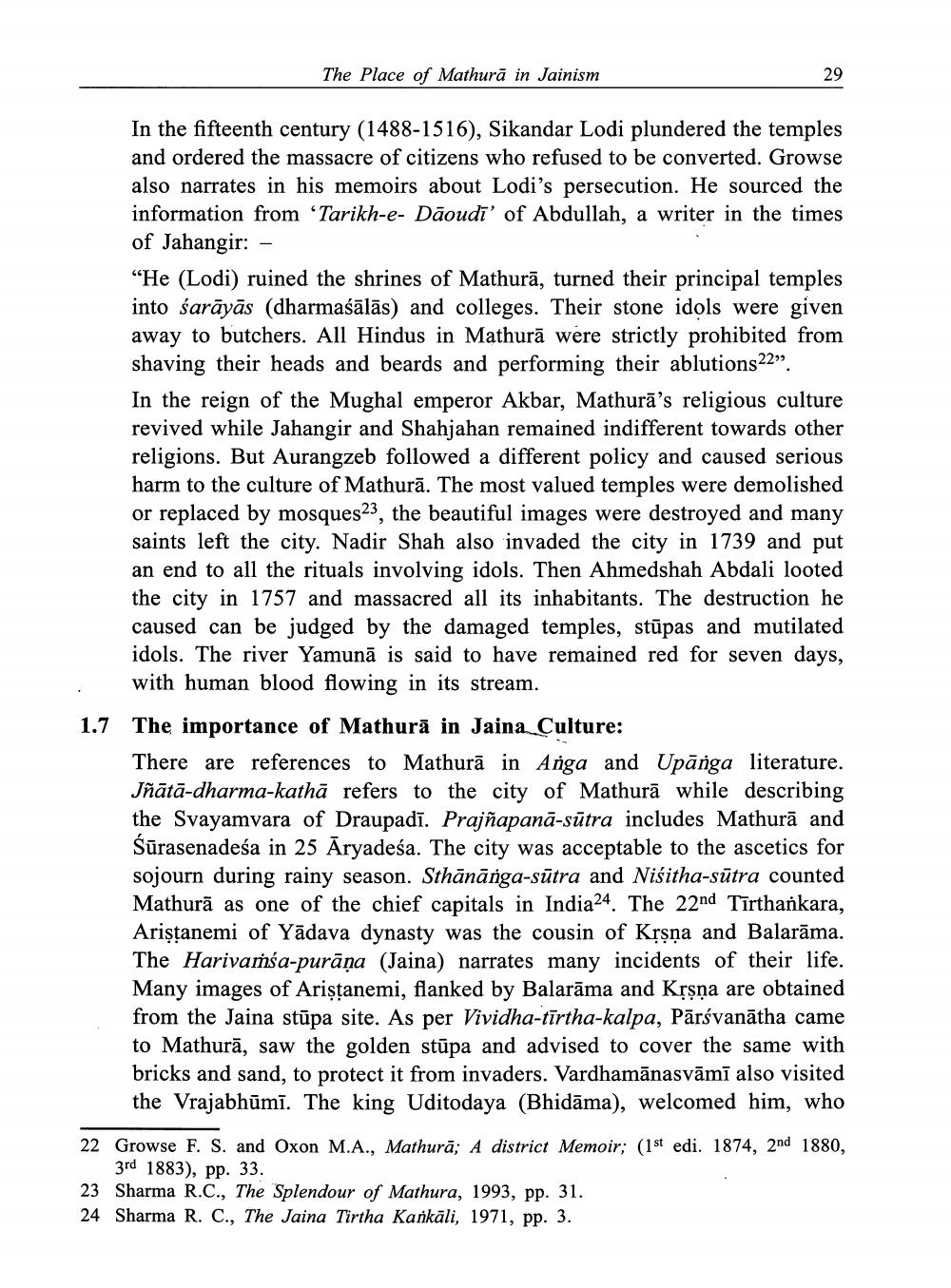________________
The Place of Mathurā in Jainism
In the fifteenth century (1488-1516), Sikandar Lodi plundered the temples and ordered the massacre of citizens who refused to be converted. Growse also narrates in his memoirs about Lodi's persecution. He sourced the information from 'Tarikh-e- Dāoudi' of Abdullah, a writer in the times of Jahangir: - "He (Lodi) ruined the shrines of Mathurā, turned their principal temples into sarāyās (dharmaśālās) and colleges. Their stone idols were given away to butchers. All Hindus in Mathurā were strictly prohibited from shaving their heads and beards and performing their ablutions22”. In the reign of the Mughal emperor Akbar, Mathurā's religious culture revived while Jahangir and Shahjahan remained indifferent towards other religions. But Aurangzeb followed a different policy and caused serious harm to the culture of Mathurā. The most valued temples were demolished or replaced by mosques23, the beautiful images were destroyed and many saints left the city. Nadir Shah also invaded the city in 1739 and put an end to all the rituals involving idols. Then Ahmedshah Abdali looted the city in 1757 and massacred all its inhabitants. The destruction he caused can be judged by the damaged temples, stūpas and mutilated idols. The river Yamunā is said to have remained red for seven days, with human blood flowing in its stream.
1.7
The importance of Mathurā in Jaina Culture:
There are references to Mathurā in Anga and Upānga literature. Jñātā-dharma-kathā refers to the city of Mathurā while describing the Svayamvara of Draupadī. Prajñapanā-sūtra includes Mathurā and Šūrasenadeśa in 25 Āryadeśa. The city was acceptable to the ascetics for sojourn during rainy season. Sthānānga-sūtra and Niśitha-sūtra counted Mathurā as one of the chief capitals in India24. The 22nd Tīrthankara, Aristanemi of Yādava dynasty was the cousin of Krsna and Balarāma. The Harivaṁśa-purāņa (Jaina) narrates many incidents of their life. Many images of Aristanemi, flanked by Balarama and Krsna are obtained from the Jaina stūpa site. As per Vividha-tīrtha-kalpa, Pārsvanātha came to Mathurā, saw the golden stūpa and advised to cover the same with bricks and sand, to protect it from invaders. Vardhamānasvāmī also visited the Vrajabhūmī. The king Uditodaya (Bhidāma), welcomed him, who
23
22 Growse F. S. and Oxon M.A., Mathurā; A district Memoir; (1st edi. 1874, 2nd 1880,
3rd 1883), pp. 33.
Sharma R.C., The Splendour of Mathura, 1993, pp. 31. 24 Sharma R. C., The Jaina Tirtha Karkāli, 1971, pp. 3.




